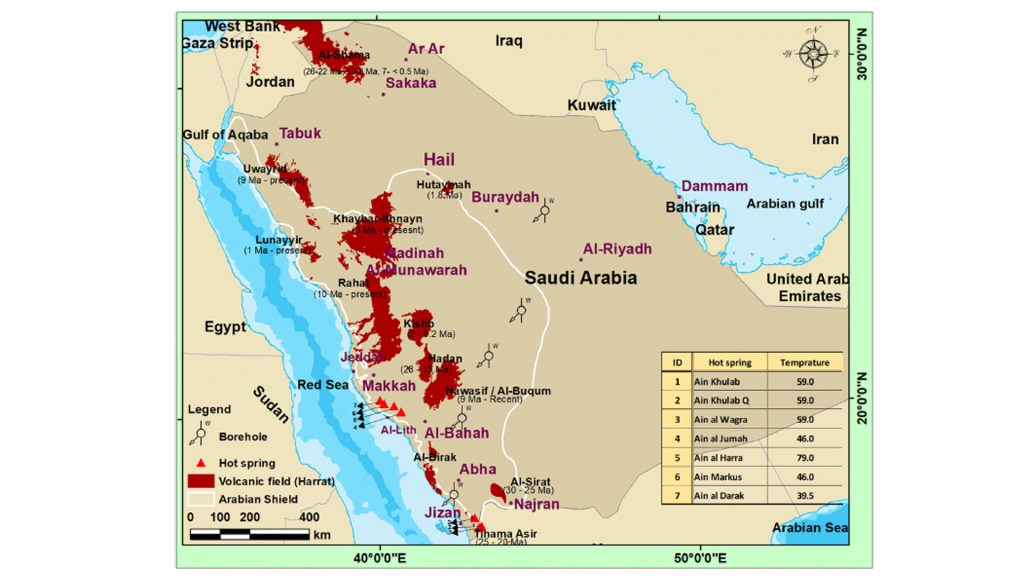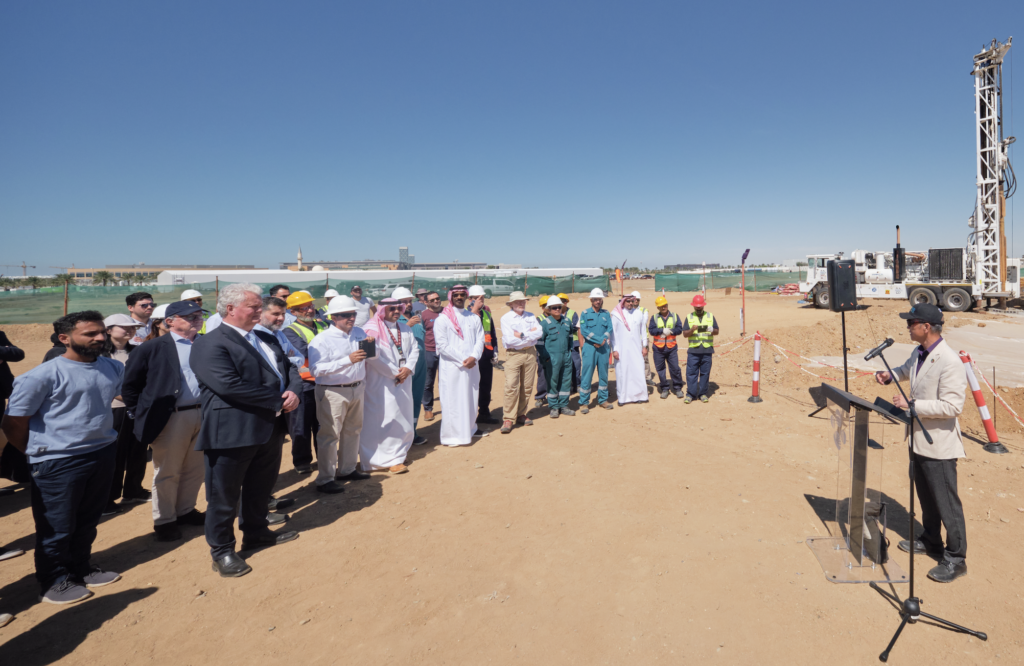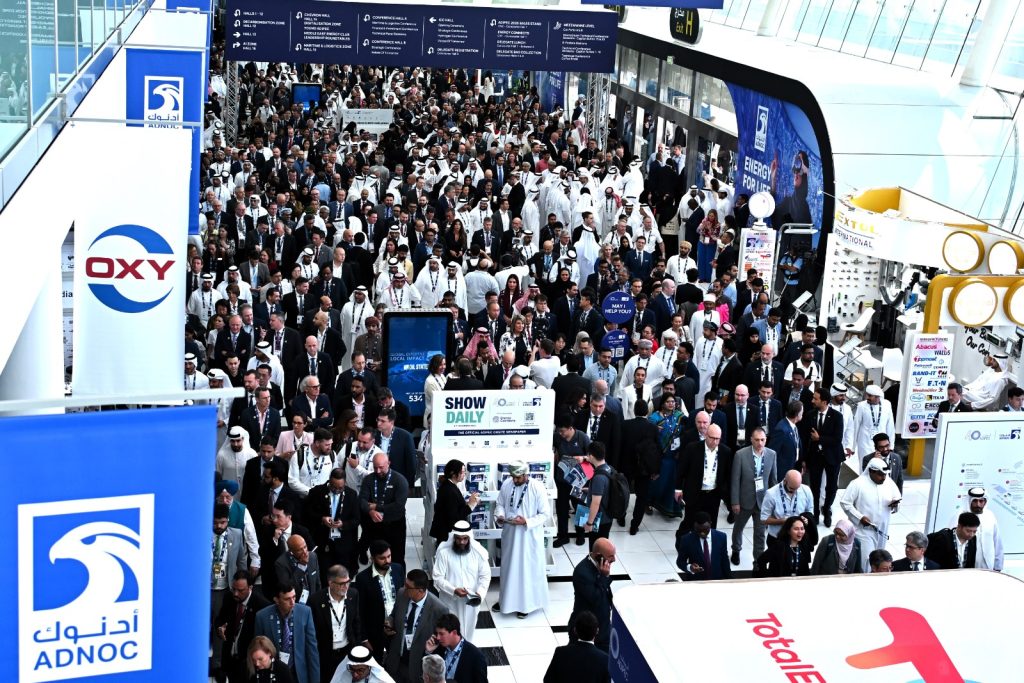As one of the world’s biggest oil producers and the leading oil exporter, the Kingdom of Saudi Arabia owes a great deal of its progress and wealth to the discovery and continued extraction of petroleum products. The nation’s power sector is also heavily reliant on hydrocarbons, which is hardly surprising considering its affordability and supply.
However, even an oil giant like Saudi Arabia is making changes towards a more low-carbon future. With an ambitious renewable energy target of 50% of its power supply by 2030, is there a prominent role for geothermal in Saudi Arabia’s energy mix?
To answer this, we examined a 2024 report published by the King Abdullah Petroleum Studies and Research Center (KAPSARC). We would also like to thank the following for providing valuable insight and industry experience on this topic:
- Naceur Ghannem – Regional Executive Director, Integrated Well Services at Baker Hughes
- Osamah Al-Momen – Marketing & Strategy Director, Baker Hughes
- Mahmoud AlGaiar – Technical Project Manager, Baker Hughes / Membership Chair, Middle East, SPE Geothermal Technical Section
Geothermal prospects and potential in Saudi Arabia
The classical geological characteristics that indicate potential for geothermal resources are clustered at the western region of Saudi Arabia. The “Harrat” volcanic field comprises over 2500 dormant volcanoes and many hot springs, with temperatures reaching 80 °C.
Early studies in the region indicate low-to-medium temperature gradients, with an exceptionally higher gradient in the Jizan area to the south. There has also been some early exploration done near Harrat Rahat that have hinted at potential “sweet spots” for geothermal energy. However, there is not enough analysis done to come up with accurate estimates of geothermal resources and reserves.
The eastern part of Saudi Arabia comprises the Arabian Platform, which are sedimentary formations that contain the nation’s hydrocarbon resources. Some of the oil and gas wells in this region have been able to tap into geothermal temperatures sufficient for various applications. Various synergies can also be explored, such as for hydrogen production and carbon capture and storage.

Aside from geothermal’s potential to supplement Saudi Arabia’s electricity grid, it can also contribute significantly to the nation’s cooling needs. Studies show that cooling consumes 101 TWh of electricity in residences and 70 TWh in commercial establishments, accounting for 50% of total yearly electricity usage. This figure can go up to 70% during periods of peak cooling demand.
In the Middle East region, a noteworthy example of geothermal used for cooling is already operational in Abu Dhabi in the United Arab Emirates. This is a special case as it uses heat from deep geothermal wells to run an absorption cooling system. However, shallower geoexchange systems can provide a more practical and technologically simpler pathway for geothermal cooling in Saudi Arabia.
Geothermal can also supply both heat and power for the region’s water desalination plants. With a scarcity of freshwater, the region is highly dependent on desalination of seawater. This is an energy-intensive, yet highly critical, process. As a heat source, geothermal heat can be used directly in thermal desalination methods.
The current status of geothermal in Saudi Arabia
In 2020, the Kingdom of Saudi Arabia announced a goal to generate 50% of its power from renewables by 2030, thus displacing 1 million barrels per day of liquid fuels. However, this goal states no preference when it comes to technology.
“Saudi Arabia is looking into multiple energy pathways, including conventional oil and gas. But they are also looking at cleaner energy and renewables, including solar and a little bit of wind. They are also looking at hydrogen as well. Geothermal is a new focus,” said Al-Momen.
As is with most parts of the world, geothermal in Saudi Arabia has not received as much attention as other renewable energy technologies. There remains a lack of understanding of geothermal, and there is limited awareness of its benefits. Available public data is not enough to create a robust assessment of the geothermal potential in the region.
On a positive note, there are already various exploration efforts for geothermal in Saudi Arabia. The most visible example would likely be the exploratory work being done at the King Abdullah University of Science and Technology (KAUST), which broke ground in early 2024. This is a pilot project that aims to use a relatively shallow (400 meters depth) geothermal well for reconnaissance, monitoring, and testing of new technologies. The project is led by KAUST Research Professor in Energy Resources and Petroleum Engineering Thomas Finkbeiner, with TAQA Geothermal as project partner.
Other exploration projects are less public, but there is nevertheless some interesting work ongoing in the geothermal space in Saudi Arabia.

From a revenue perspective, it is also beneficial for Saudi Arabia to develop a more diverse and optimized energy industry. “Energy in this region is subsidized by governments. As both the population and the industrial sector grow, there is also a higher demand for energy. Thus, that subsidy is also going to increase. So, governments have to look at ways to optimize the energy sector and look at alternatives. Geothermal can be one of those alternatives,” explained Al-Momen.
The role of the oil and gas industry
With a rich history in oil and gas exploration and extraction, Saudi Arabia is uniquely positioned to leverage existing skills and technologies for geothermal development. Many technologies essential in geothermal, such as directional drilling and well stimulation, are already deployed in Saudi Arabia’s oil and gas sector.
During the opening ceremony of the International Petroleum Technology Conference, His Royal Highness Prince Abdulaziz bin Salman Al-Saud, the Minister of Energy, mentioned that state-owned petroleum company Saudi Aramco will be a key enabler in advancing geothermal at the rapid rate needed to meet energy diversification and climate goals. Given its extensive history of oil and natural gas exploration, Saudi Aramco has knowledge of the Kingdom’s geology more than any other entity in the geothermal field.
Saudi Arabia’s long history with oil and gas also means that the Kingdom has established long-standing relationships with service providers, many of which have a global footprint and experience in both oil and gas and geothermal. Baker Hughes is one such example.
“We have 40 years of experience in geothermal,” said AlGaiar. “Baker Hughes has been a part of a large number of geothermal projects, providing expertise in many areas including reservoir analysis, geomechanics, and tools for high pressure and high temperature environments. Our portfolio covers the whole value chain of geothermal project development.”
As Membership Chair of the SPE Geothermal Technical Section (GTTS) in the Middle East, AlGaiar also actively advocates for cross-industry collaboration, mobilizing oil and gas expertise to facilitate geothermal development. “We are trying to promote geothermal at every upcoming local conference, making sure that there is a dedicated panel for geothermal. We are making sure that geothermal is available at each conference and that there are geothermal topics that participants can submit papers for.

The SPE GTTS aims to aid geothermal development in the Middle East region through the collection, dissemination, and sharing of technical knowledge related to geothermal energy, while demonstrating its link to traditional oil and gas disciplines. Through collaboration between the two fields, the SPE GTTS is also promoting industry best practices via knowledge and skills transfer.
The repurposing of abandoned oil and gas wells presents another possible pathway for geothermal development in Saudi Arabia. Converting or enhancing depleted oil and gas wells into geothermal wells will help offset their abandonment costs while producing clean energy and extending the wells’ lifespans. Baker Hughes, as the leader of the Wells2Watts consortium, is already working on a closed-loop single-well technology designed specifically for this geothermal use case.
A pathway for geothermal energy in the Middle East
“Big companies would like to enter the market in Saudi Arabia,” said Ghannem. “But currently there are no geothermal projects yet and the sector is only at the exploration phase.”
The geothermal sector of Saudi Arabia is currently at a very nascent phase, and there will have to be more investment put into research and drilling campaigns. It is also necessary to implement regulations and incentives to encourage businesses to introduce geothermal technologies to the market and streamline the adoption of these technologies.
The KAPSARC paper cites the example of the 2020 Saudi mining investment law. This law created a mining fund that supported exploration programs, research and studies, and mining-related infrastructure projects. A similarly enabling environment can help accelerate the deployment of geothermal by incentivizing exploration, investment, and research.
On the part of technology partners, Ghannem mentions three key pillars that can help support geothermal – technology, vision, and the motivation.
A positive sign of support for geothermal in the Kingdom is the multiple stakeholders seemingly taking ownership of various aspects of geothermal research and exploration. “KAUST is coming from the academia and technology side, KAPSARC is taking the lead in the policy side of things, and Saudi Aramco is taking the lead on the operational and execution side,” said Al-Momen.
“As Baker Hughes, we are also coming in from the service side. So, there are several stakeholders in the Kingdom that are pushing the geothermal agenda.”
“I am sure that, one day, geothermal in Saudi Arabia will move from exploration to appraisal,” commented Ghannem. “I think the motivation is there. We do have the development expertise and the technology here. We only need cooperation among researchers, investors, policymakers, and other stakeholders of the energy ecosystem.”
“I don’t believe that we are in an energy transition. Rather, what we need is an energy addition,” added AlGaiar. “We are in an industrial revolution and we are consuming a lot of energy for AI and data centres. The more that AI becomes essential in industries, the more power we will need.”
“Everyone is now investing in geothermal, including technology giants like Microsoft and Google. Geothermal will be there in the equation of energy, no matter what the main problem is. It is now underrated because of the high upfront cost, but if we can get the levelized cost of energy or heat that is competitive to other renewables, especially with the high capacity factor of geothermal, then it’s a win-win scenario.”
This article appeared on Think Geoenergy
